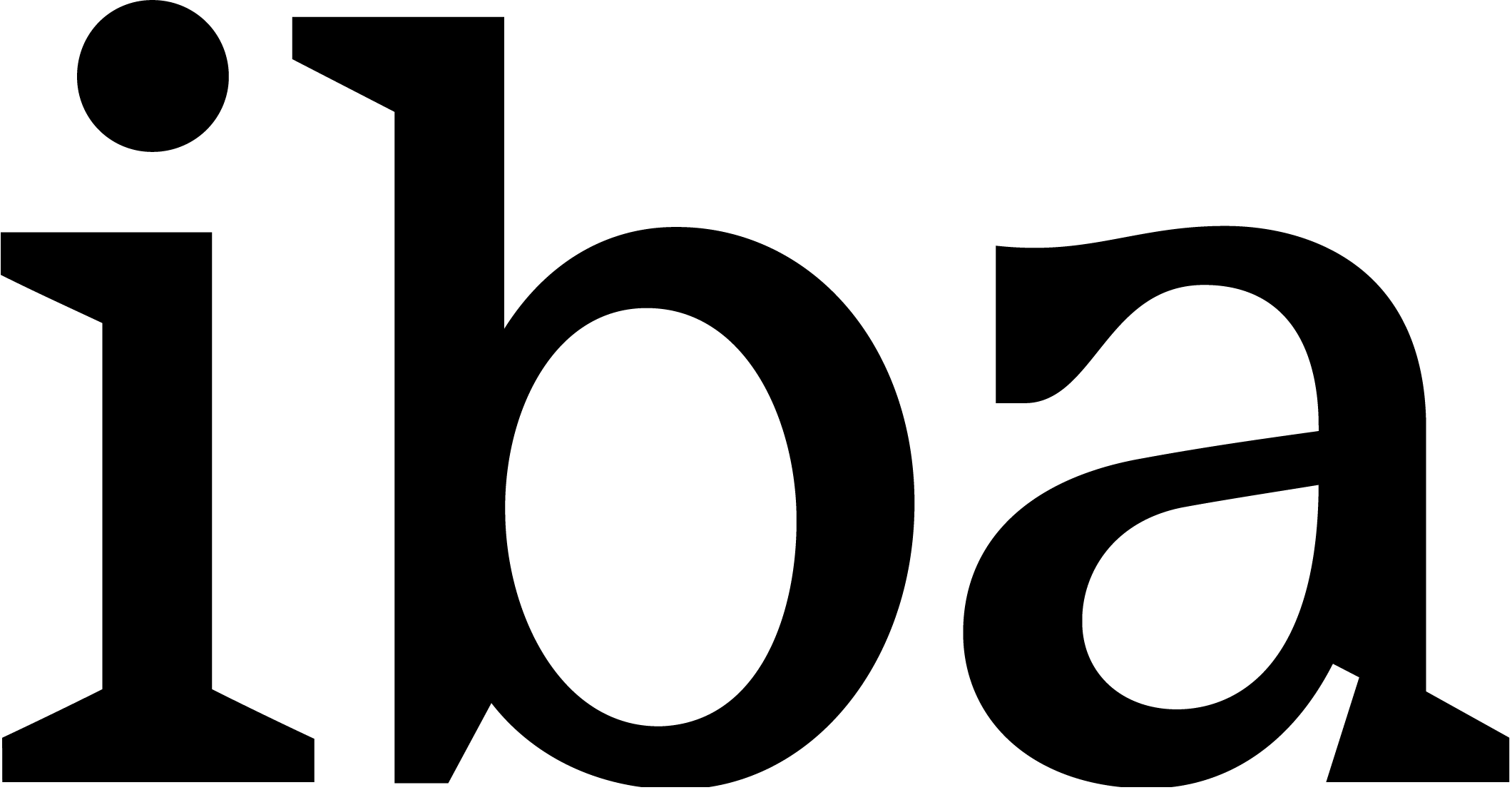Fluid Frequencies and Signals of the Future Foreshadow AB7: ECLIPSE
20 October 2020Nadine Atallah: “Egypts participation to the 2nd Sao Paulo Biennial” (2019)
25 October 2020Interview with Lorenzo Fusi, Artistic Director of Yerevan Biennial Art Foundation (YBAF) and Curator of the 1st Yerevan Biennial 2020-2021 “The Time Complex” organised by the YBAF – https://yerevanbiennial.org/ (recorded on Monday October 19th 2020 and transcribed for IBA)
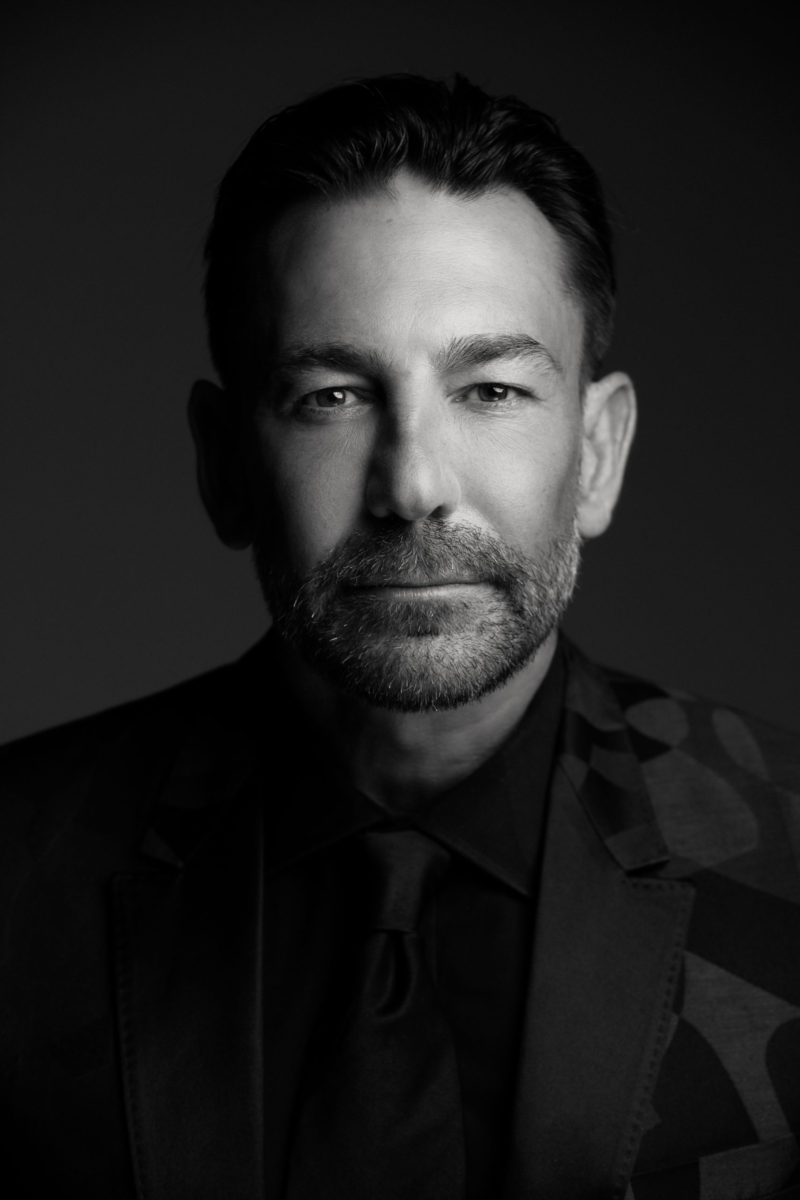
Lorenzo Fusi, Photo: Courtesy of Yerevan Biennial Art Foundation
IBA: Can you give an account of what the situation is with your project and how the crisis affected it?
I was appointed as Curator of the 1st Yerevan Biennial in October 2019, less than a year from the scheduled opening in September 2020. This put me from the outset on a very tight schedule. While this lack of time was clearly an obstacle initially, in hindsight it made it easier for us to adapt to the COVID-19 crisis. We were already working on very fluid grounds. The biggest limit of such a calendar was the impossibility of commissioning new ambitious projects and having to mostly rely on pre-existing artworks that needed little or no modification to adapt to the circumstances in Yerevan. I also had to quickly come up with a theme and framework for the show and define an initial list of artists. It was like hitting the ground running and that is always challenging even in “normal” times. Soon after the pandemic was declared, it became clear that the planned exhibition could not happen as this was initially envisaged. I had to rethink the project from scratch. We immediately thought of organising a digital exhibition instead. At the time, the organisation was in its infancy and still lacking an appropriate infrastructure. It took us over 4 months to be ready. By this time, early summer, other biennials and art institutions had already taken the digital route.
To our advantage, “The Time Complex” (the theme we had settled on for the biennial) was still relevant. In fact, even more so than prior to the lockdown. It became almost a prophecy. During the pandemic, our perception of time and space changed, forcing us to re-imagine our relationship with both of these fundamental categories of our being. The first decision we took was to think of the 2020 Yerevan Biennial as a durational project unfolding over of the period of one year, divided into episodes, of which the digital exhibition was the inaugural manifestation, the first chapter. This sudden change of plans prompted us to re-imagine the biennial model and move away from the traditional exhibition format and accompanying public program.
When we were finally getting ready to launch our digital project this summer, we realised that the entire world was experiencing something of a digital overload. People, particularly in the visual arts, were vocalising their digital fatigue. Instead of launching immediately, we decided to wait until October, traditionally the month where the art system resumes its activities after the summer break.
We could not imagine that our new launching date would have coincided with the outbreak of the war in Artsakh or Nagorno-Karabakh, which literally started 2 days prior to our scheduled launch. Needless to say, the start of the conflict was a shock and made all of us (who are not based in Yerevan) extremely frightened for the whole team there. We really did not know what to do at first. We considered cancelling everything or postponing indefinitely, but we also felt that our withdrawing from the public eye would have allowed the logic of war to prevail. Against all odds, we ultimately decided to launch as planned, although quietly and respectfully. The mere act of opening became a statement because arts and culture truly define humanity. Even when facing a war which is, sadly, another defining condition of the human race.
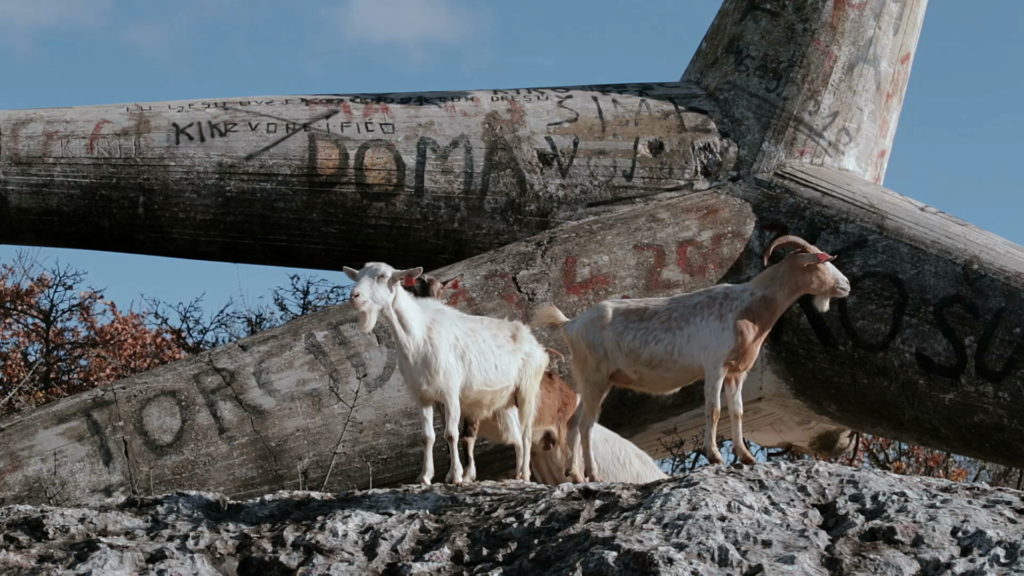
Igor Grubic, Monument, 2015, Video Still. Courtesy of the artist
IBA: Was the decision to open something which was discussed also with the artists or did it happen mainly at an institutional level?
In a matter of hours, the decision of going ahead with the project was taken at an institutional level. We consequently emailed all artists the intention of going ahead with the launch, explaining with a statement our motivations. Most international artists were not familiar with the situation in the region and could not understand yet the gravity of what was happening on the ground. The local artists, on the other hand, especially during first days of the conflict, had clearly more serious matters to deal with. We were all a bit shell-shocked at first, but once we were able to resume the conversation with all the artists, they supported the idea as a way to send a signal of hope and try to interrupt the constant cycle of news echoing the noises of war.
As part of our digital program, we also launched another important project: our partnership with Google Arts and Culture (https://artsandculture.google.com/partner/yerevan-biennial-art-foundation), one of the first collaborations of this kind in the region. This project is particularly relevant now, following the escalation of the conflict. Through this platform, we hope to facilitate mutual understanding, foster cultural diplomacy and generate sharable knowledge from and about Armenia. For it, we have already commissioned new digital exhibitions and projects to a number of Armenian artists and curators. It is our desire to showcase in this context Armenian art, culture and heritage (all that makes Armenia unique in the region and globally). We want these projects to act as the country’s digital ambassadors: a role that is now more important than ever given our reduced mobility.
In this instance, Armenia’s presence on a global platform such as Google Art & Culture is incredibly important, particularly against the deafening silence on this conflict of a large part of the cultural and art sector, which appears to be immobilised by a sort of preventive self-censorship. Promoting Armenian culture now is not only an act of resistance but a means for unpacking the history that eventually led to the current conflict. I sincerely hope that we can find in this information the tools for avoiding other conflicts.
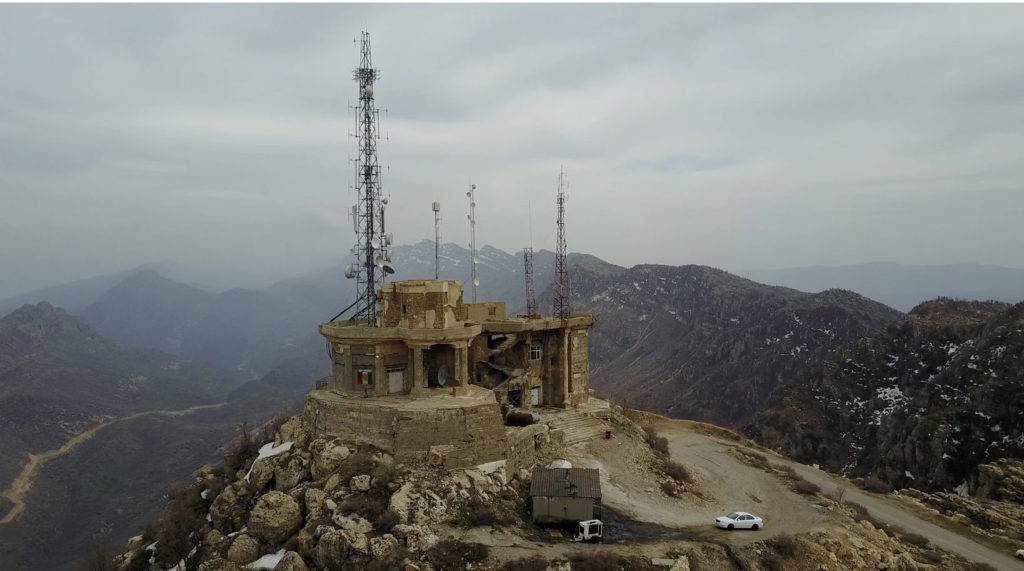
Walid Siti, The Troubled Bear and the Palace, 2019, Video Still. Courtesy of the artist
IBA: You mentioned that you had started thinking about this project literally just a few months before the outbreak of the pandemic. Can you give us a sense of how you start working with the artists and your team if you know from the outset that travelling will be hindered and that producing new works will also be almost impossible?
As said, the project was conceived within a very tight timeline. We never planned new pharaonic productions and yet we were inevitably affected by the limitations arising from the pandemic. We were naturally saddened because many artists really wanted to visit and produce work in and for Armenia. It must have been particularly frustrating for the artists of Armenian descent and the diaspora. For them, the exhibition in Yerevan was a way to return or even experience the country for the first time. On a practical level, when the pandemic was declared we were at a point of finalising the use of venues and planning the logistics of the exhibition (site-visits, shipment, insurance, etc.) and suddenly all the work and negotiations were stopped.
When the physical exhibition came to a halt, we began almost immediately to conceptualise the show as a digital experience, starting conversations with artists anew. To be clear, while some of the artists we had initially invited to take part in the original (physical) project in Yerevan are also present in the digital exhibition, these are two entirely separate projects. The digital space, in my opinion, requires a completely different curatorial approach and offers different opportunities.
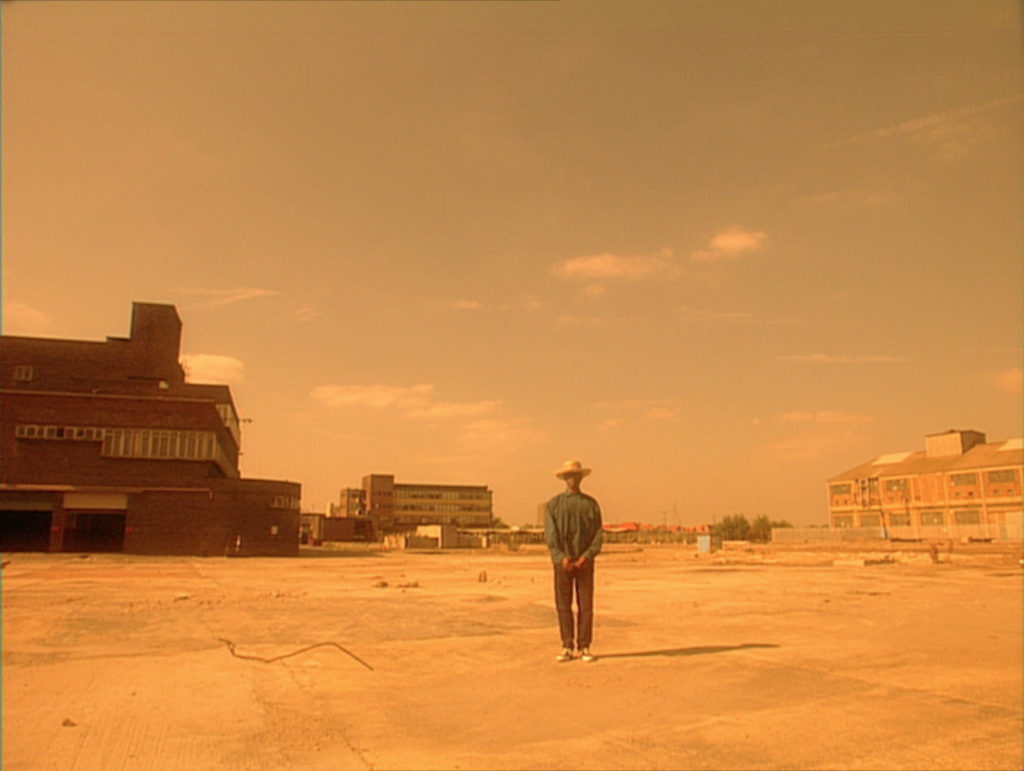
Black Audio Film Collective, John Akomfrah, The Last Angel of History, 1995, Video Still. Courtesy Smoking Dogs Films and Lisson Gallery.
IBA: Did this impact the way you chose to work with the artists (travel limitation etc) and give us a sense of how you developed?
Allow me to reply to this question more widely and speak to cultural production in general. I really think that everything that happened in 2020 has put us in the position to question and interrogate what we are doing, why we are doing it, and how we are doing it. And to be honest I find this quite healthy because we usually take most things for granted in our lives. We assume that art and culture are always necessary and important, and so it is our work. We believe that what we have is a given, but – guess what – this isn’t necessarily the case… Maybe we need to periodically reassess what is worth fighting for and redefine what is really important and relevant to us. This period, on a personal level, offered me ample time to question myself, my position and role in society.
In the middle of this self-reflective process, I conceived our digital exhibition as a free-standing, independent project, and not as a duplicate of a physical show. The online exhibition has a completely different feeling and responds to its inner spatial logic. We wanted to acknowledge the peculiarities of the digital space and its own peculiar relation to time, which is after all the theme of the show. The notion of time has become very queer and fluid as of lately. The digital realm perfectly captures this new essence of time, where the present is fabricated in the future, and the past lived in the present.
You can enter and exit the exhibition at any one point, there is no fixed itinerary, no given narrative. This lack of linearity is probably not a first in the history of exhibition-making, but the digital space (and the way we navigate it) is unquestionably bringing us towards new territories that might redefine the role of the institutional curator entirely. This realisation has forced me also to reconsider my own role in this project. During the making of this exhibition, I realised that curating for the digital space resembles curating in the public domain or sphere. It is an unmediated environment, where the behaviour of the viewer cannot be controlled, regimented or managed as it happens in the galleries of a museum. It is a wild anarchic space, where curatorial conventions and institutional rules are disregarded. And that makes it very exciting.
Being this my first “proper” digital exhibition, I was looking at a number of other examples. Many digital displays were attempting to reproduce or duplicate the physical space within the digital realm. And that’s something which I knew from the outset I did not want to do.
I worked closely with our lead-designer and our IT team towards the creation of a space that was not responding to the same laws of a physical exhibition. I’m happy with the result but there is so much more we could have achieved…
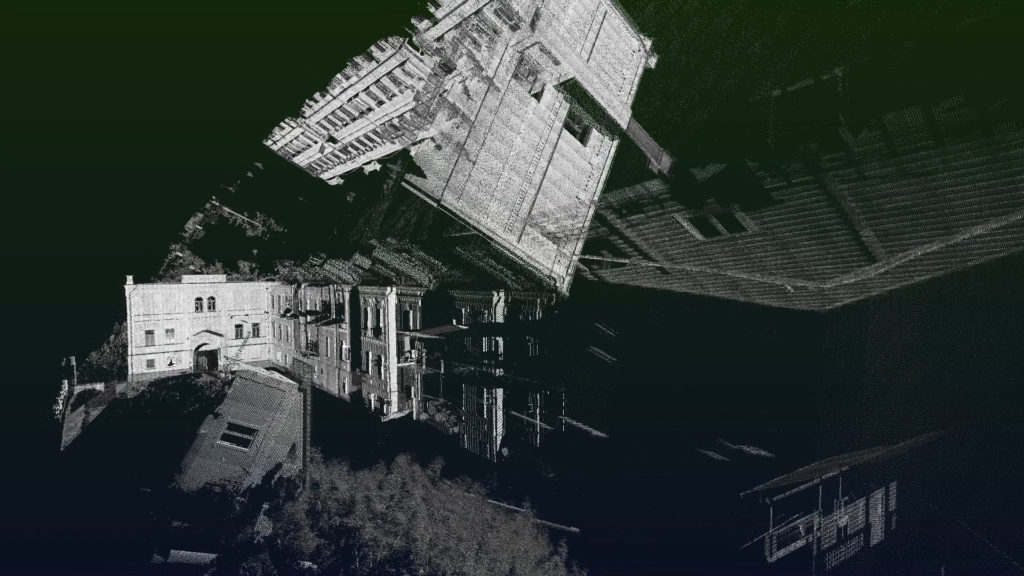
Bahar Noorizadeh, After Scarcity, 2018, Video Still, Courtesy of the artist
IBA: Given your acquaintance with the biennial model, you were part of the curatorial team of the Liverpool Biennial for many years among others, do you think this is a moment that can really mark a change and shift towards a more sustainable model for biennials?
Allow me a rather cynical comment. We’re all too aware that we, as humans, have a tendency to go back to the default position as soon as possible after a crisis. I fear this is precisely what is going to happen in the institutional realm. However, to answer your question more thoroughly, I think there is a longer conversation to be had with regard to biennials and sustainability. One of the main myths to be dispelled is that biennials are somehow drawing away resources from other institutions and platforms. Until this idea remains unchallenged and is not analysed more in depth, beyond a simplistic rhetorical discourse, we won’t be progressing much on this debate.
From my experience, it is clear that biennials represent an opportunity more than a threat. We could define them as a catalyst or an amplifier. I saw more organisations proliferate and grow with biennials, than organisations being shut down because of biennials. Biennials generally work best if there is an infrastructure around them. A fertile soil to work with, so speak.
When we talk about sustainability, I think we have to differentiate between biennials. On the one hand, you have the establishment: the biennials’ Gotha. On the other, there are organisations that are literally called biennials only because they happen every two years (or rather they operate in the hope of happening every two years) and in between they basically do not exist at all. These organisations largely survive thanks to the personal commitment and hard work of a handful of individuals, who are the Don Quixotes of the biennial model. Before talking about sustainability, we should make a clear distinction because, naturally, not all biennials are the same.
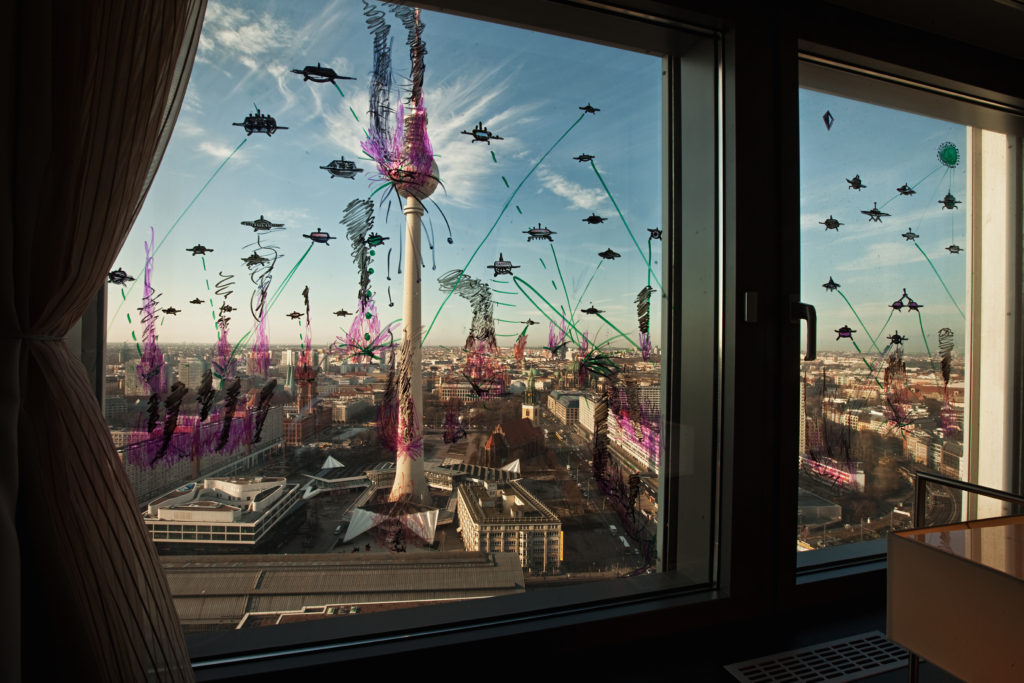
Karen Mirzoyan, Berlin, Intergalactic war photography, 2012-2019 Courtesy of the artist
IBA: Can you give us a sense of how the IBA network represents a resource in these circumstances?
I think that in our field it is really important not to work in isolation. We must find ways to exchange and share our experiences and learn from each other. To have a network is incredibly important. Even purely on a logistic level, for avoiding clashes of events or coordinating the circulation of artworks or people, for example, so as to limit cost and carbon footprint. But most importantly the network can enable the circulation of ideas and content.
The other important task for a network such as IBA is to create a shared archive, an index of what biennials are doing. We are all focused on preserving our institutional legacies, but it would be great to have a common space and a shared resource for curators, artists, historians and the wider public. Just think of the many biennials that closed down after a couple of editions. Their archives have vanished, and it is almost impossible to retrieve any information on these events.

Sonia Balassanian, Brooding, 1999, Video Still. Courtesy of the artist
IBA: To close I want go back to a quote, by Anaïs Nin, that you mention in the accompanying text to the biennial which reads: “We do not escape into philosophy, psychology and art — we go there to restore our shattered selves into whole ones.”. How do you relate to this and generally to art literally in an ongoing war?
I can only speak for myself on this subject. What became clear to me is that every war represents an attempt to annihilate the other and the best way to do so is to erase their culture and silence their voice. The only thing we can do as a cultural organisation is to be alive and present despite the war, signalling this vitality to the people from Armenia and beyond, as an act of resistance. To contrast the logic of war we must adopt an approach that is less confrontational and more dialogical, more reflective. And culture is generally conducive to this type of conversations.
Avoiding propagandistic slogans, we are now asking all people to take their time in understanding the culture and history that has produced this conflict and exploring which avenues we can take to end it. But it is hard to remain lucid and objective when people around you are dying or suffering. That is why war is so devastating: it is truly a de-humanising experience.
